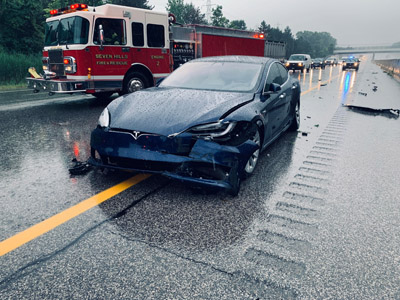Recent claims data from Mitchell debunks the perception that EVs are more often declared a total loss following a crash than their ICE counterparts.
Mitchell, an Enlyte company, on Nov. 8 released its latest trends report: Plugged-In: EV Collision Insights, examining total loss frequency for electric and ICE automobiles.
In the U.S. and Canada from Q1 to Q3 2023, the EV total loss rate was 7.25% for models 2020 and newer. Luxury ICE automobiles manufactured over the same time period and with a comparable actual cash value (ACV) had a rate of 7.47% versus 8.49% for all ICE vehicles.
“Many believe that auto insurers are writing EVs off as a total loss more often than their ICE counterparts of a similar model year and ACV, even with only minor damage,” said Ryan Mandell, director of claims performance at Mitchell. “Our data simply does not support that conclusion. In fact, even though an EV’s lithium-ion battery significantly increases the likelihood of a total loss outcome, we do not see these automobiles declared total losses more often than ICE alternatives.”
Along with total loss frequency, the Q3 2023 Mitchell report documents the difference in EV and ICE automobile:
Labor: Labor for EVs represented nearly half the cost of the total collision repair (49.66%) as compared to ICE alternatives (41%), equating to more than six additional labor hours per job.
Claims Severity: Repair costs for all EVs continue to trend higher than those for gasoline-powered vehicles, with a differential of $950 in the U.S. and $1,301 in Canada. These numbers are expected to grow in the coming months as supplements are written.
Parts Usage and Repair: OEM parts are the standard for EV repair with 88.85% of repairable EVs using parts provided by the vehicle manufacturer versus 67.48% for ICE alternatives.
The Plugged-In: EV Collision Insights report also highlights a modest increase from Q2 in claims volume for repairable EVs of 1.86% in the U.S. and 3.14% in Canada. The top North American regions for EV collisions---British Columbia, California and Quebec---saw increases in claims frequency as well.
To download the full report, visit the Mitchell website. You can also subscribe to future issues or access previous reports online at www.mitchell.com/plugged-in.













